While researching something completely different, not intending to read anymore about traffic horrors, I came across this headline from the Trib on June 6, 1934:
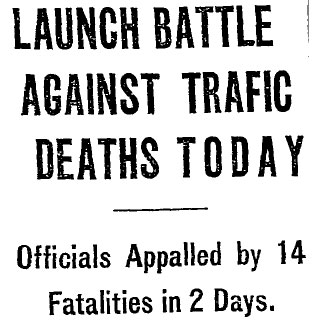
(That weird verb construction—using a pseudo-imperative mood in order to eliminate the need for a sentence subject—was something the Tribune did for a long time, as Eric Zorn notes. I can't help but wonder if this is why schizophrenics used to get messages from the newspaper. At the very least, it would have driven me up the wall to read a paper every day that read like it was telling me what to do.)
14 traffic fatalities in two days seemed like a lot, so I started poking around. It turns out Chicago was an extremely dangerous place to walk or drive in the 1920s and 30s. The Tribune, in a morbid bit of data-driven journalism, kept a running tally of deaths from guns, cars, and moonshine in its "Hands of Death" feature:
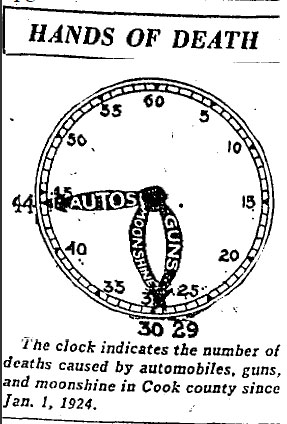
That was published February 12, 1924, so 44 auto fatalities might seem like a slow pace. But then the weather warmed up; in the next two months, give or take, another 100 died. 687 people died by the end of that year, and the hands of death spun faster in 1925:
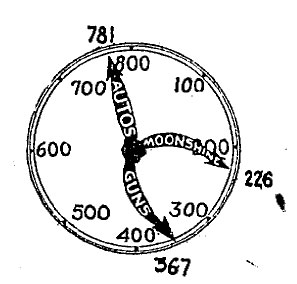
In 2009, Illinois registered seven traffic deaths per capita. In Cook County in 1931, after traffic deaths had passed 1,000 a year, the rate was 32.8; in the collar counties, 53.75.
By 1935, traffic fatalities were on the decline again, though the Trib's rhetoric hadn't eased:
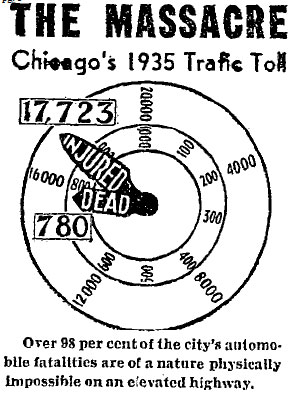
The Trib kept up "The Massacre" through 1940, as auto deaths declined and injuries rose:
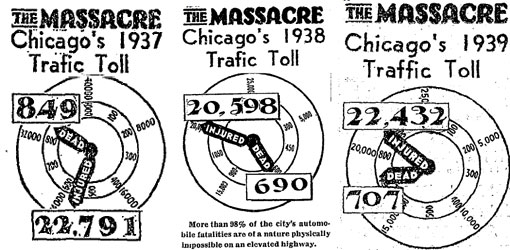
In 2010, there were 236 auto fatalities in Cook County, but 38,887 injuries. I knew auto safety vastly improved over the 20th century, as suggested by the changing ratio of deaths to injuries. What I didn't realize was how bloody—and morbid—it used to be.


